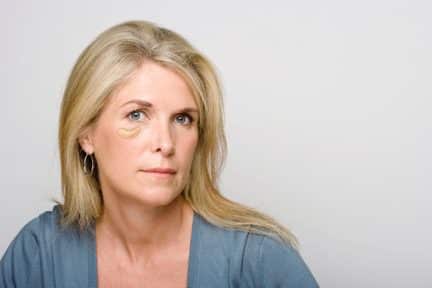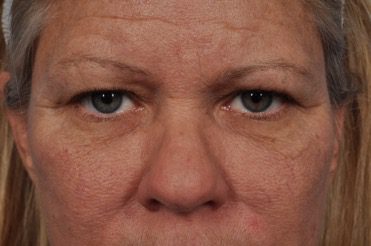
Imagine putting on a pair of Armani pants at Neiman Marcus or Bloomingdales. Your reflection in the mirror isn’t what you expect. The pants are so long that they hit the ground and need a little shortening, and maybe a little work at the waist.
Festoons are like that—but on your face. They are the trailing edge of the lower eyelid as it drapes on to your cheek and face—the “ground” that the eyelid skin hits. They are a deformity that I see in my office every day, now more than ever.

What are festoons? In my view, they are areas of edema, or excess tissue or filler, “trapped” between two areas of firm suspension in the lower eyelid. They can occur with thyroid problems, with allergies or both. Sometimes they just occur because that’s the way someone ages.
But, we are seeing this more and more often from the injection of fillers to this area. If you have festoons, and you’ve had filler under the eyes or in the cheeks either to correct them or just to fix your cheeks or your lower eyelids, your festoons are probably from the filler. Whether done with the best of intentions, or improperly, fillers are “hydrophilic”, which means they draw fluid to them and often making the swelling worse. It’s most noticeable in the morning because laying flat allows more fluid to accumulate. In other words, filler-induced festoons make you look awful in the morning. Even worse, some fillers, by virtue of their water drawing qualities, are worse than others. Fortunately, most fillers can be dissolved and instant improvement can be seen after dissolving them. We would start there if the festoons are filler-induced like these:

Woman with festoons and underage bags
There are other options to treat festoons:
- Start by trying to control the allergies or the thyroid problem.
- Festoons can be surgically addressed.
- They can be cut away (leaves a scar).
- Surgery can pull up on the entire eyelid cheek complex (they may come back).
- You can treat them with laser (our favorite approach, but there is downtime).
At W Cosmetic Surgery®, we are now pioneering and perfecting a technique of treating festoons that is minimally invasive using RF energy controlled by infrared video temperature monitoring. This is an in-office procedure that takes twenty minutes and is virtually painless.
We have incredibly encouraging results with this approach, with minimal downtime. I have presented early findings at national conferences and look forward to continuing my research. We’d be happy to go over your options with you. Call today to get on our consultation schedule.

